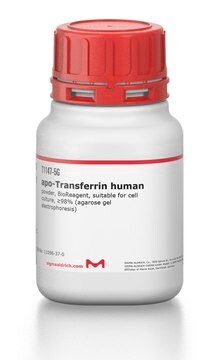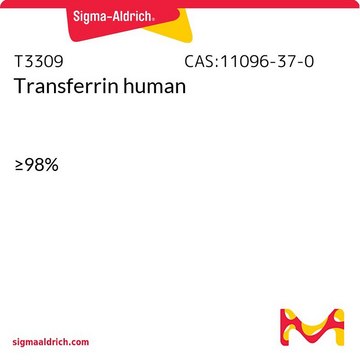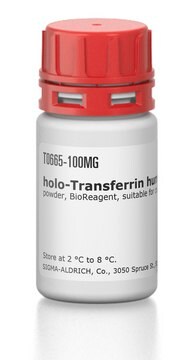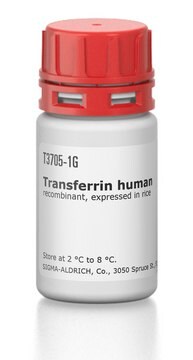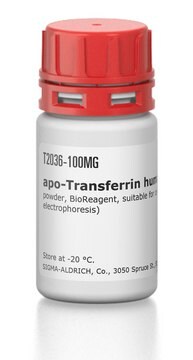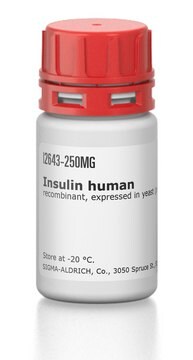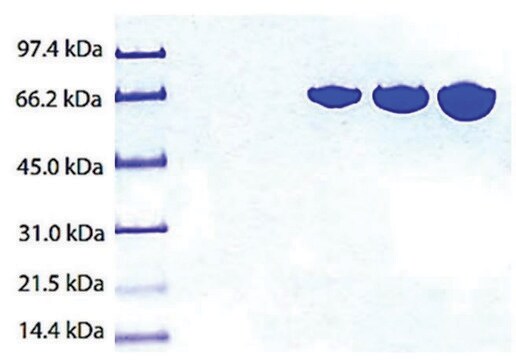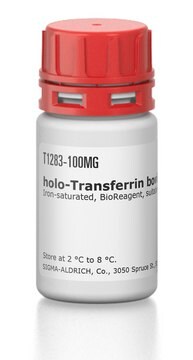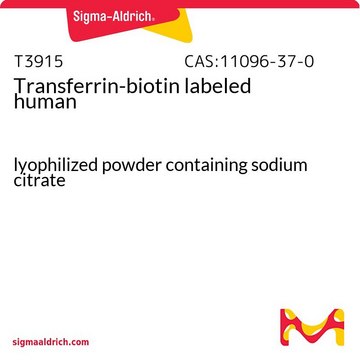T8158
Transferrin human
powder, BioReagent, suitable for cell culture
Synonym(s):
Siderophilin, partially saturated
About This Item
Recommended Products
product line
BioReagent
Quality Level
Assay
≥98%
form
powder
concentration
~25 mM
technique(s)
cell culture | mammalian: suitable
impurities
endotoxin, tested
hepatitis and HIV antibody, none detected
solubility
H2O: 50 mg/mL
UniProt accession no.
shipped in
ambient
storage temp.
−20°C
Gene Information
human ... TF(7018)
Looking for similar products? Visit Product Comparison Guide
General description
Application
- to incubate human proximal tubule cells (HKC) - 8 cells along with IgG for the examination of albumin specificity
- as a supplement in serum-containing/devoid medium for human thyroid cell culture
- as a target glycoprotein to develop an in-gel hydrazinolysis method
Biochem/physiol Actions
Other Notes
Preparation Note
Analysis Note
Disclaimer
related product
Storage Class Code
11 - Combustible Solids
WGK
WGK 3
Flash Point(F)
Not applicable
Flash Point(C)
Not applicable
Choose from one of the most recent versions:
Already Own This Product?
Find documentation for the products that you have recently purchased in the Document Library.
Customers Also Viewed
Articles
How transferrin and other cell culture components affect the performance of serum-free, protein-free cell culture systems used for biomanufacturing heterologous proteins including monoclonal antibodies. The page introduces the in vitro chemistry and biochemistry of transferrin.
Our team of scientists has experience in all areas of research including Life Science, Material Science, Chemical Synthesis, Chromatography, Analytical and many others.
Contact Technical Service